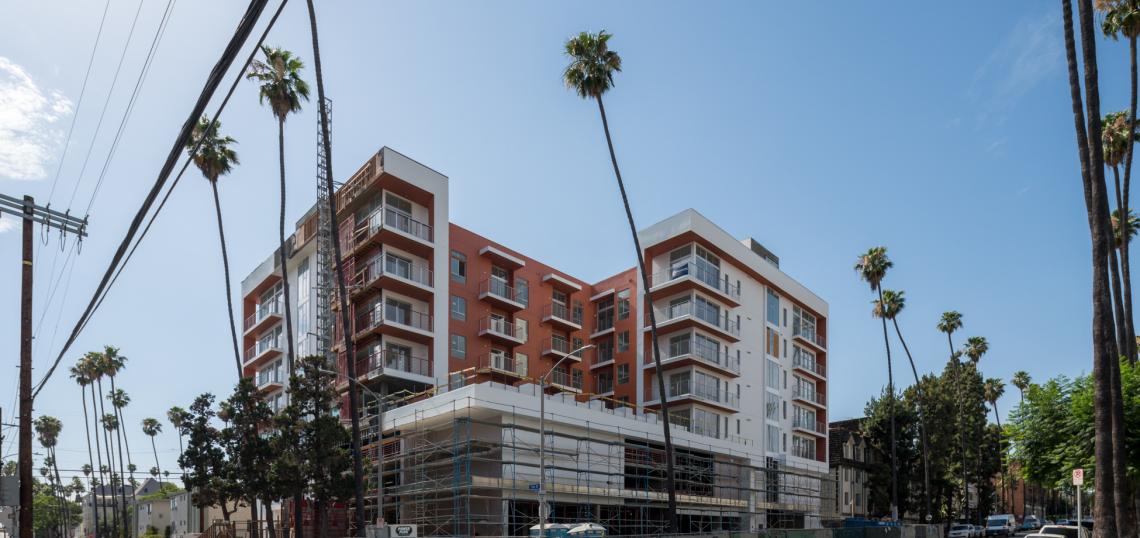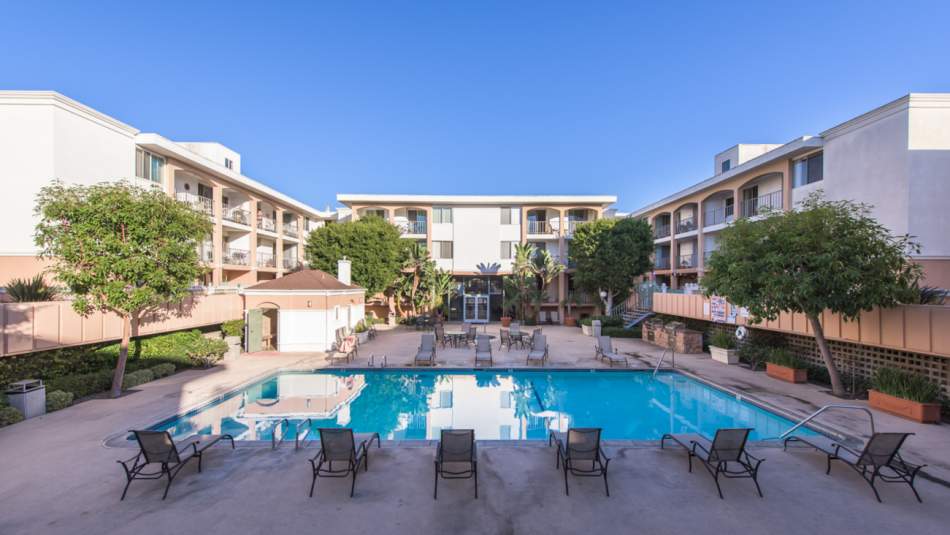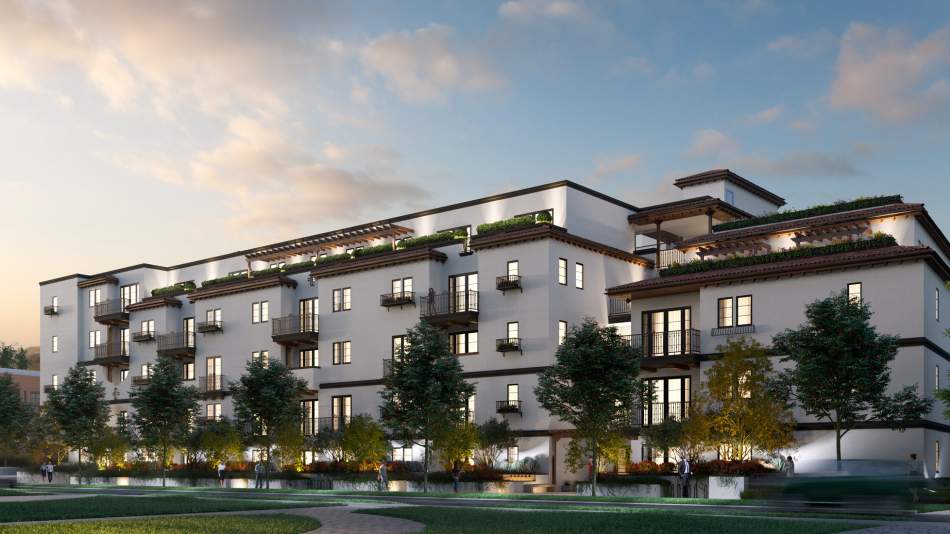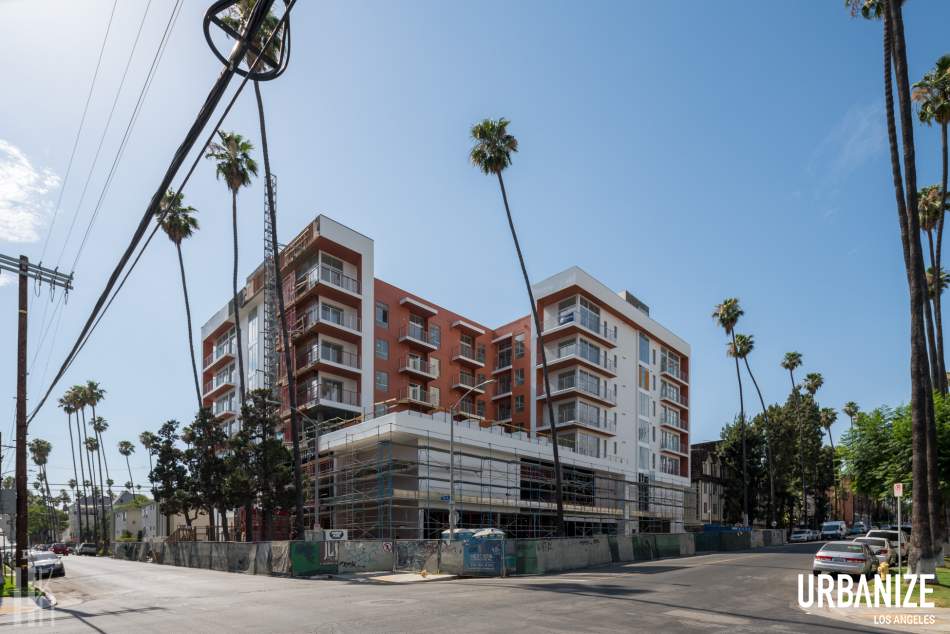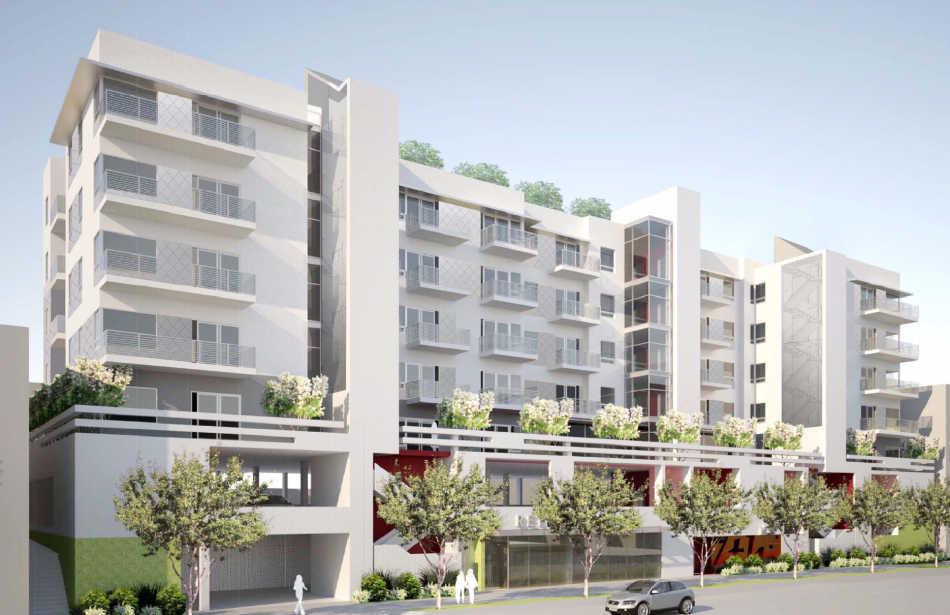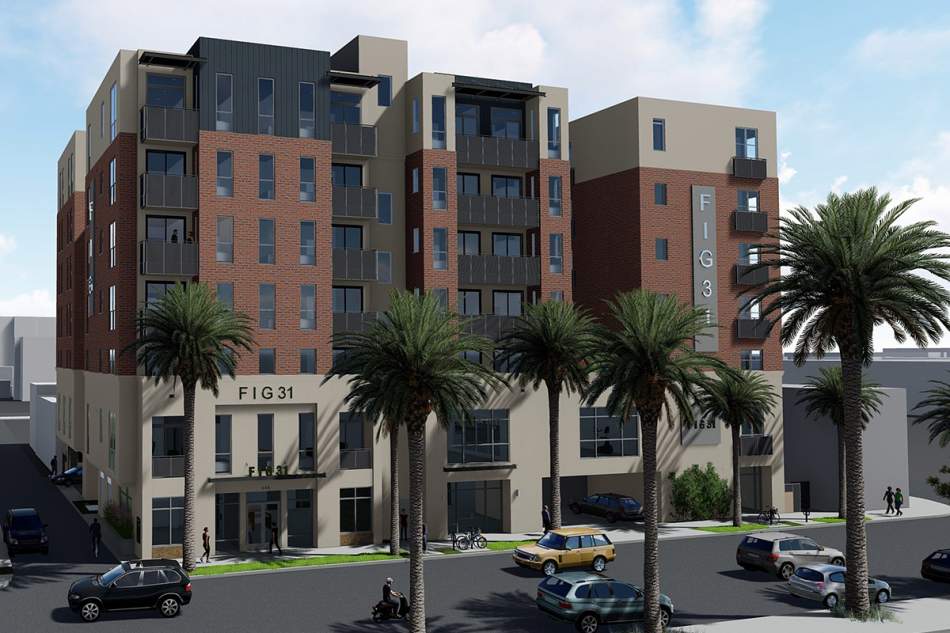Steve Erdman is a Los Angeles-based real estate developer specializing in the construction of multifamily and mixed-use developments. An Israeli immigrant and graduate of Cal State University Northridge, Steve began his career over 40 years ago working for Jona Goodrich at Goldrich & Kest, Inc. After 20 years working under Goodrich, he left to found Canfield Development, where he still serves as President. He has built thousands of units over the course of his career, and currently has projects in Westwood, Koreatown, Hollywood, and Downtown.
Learning under Jona Goldrich at Goldrich & Kest in 1977 gave you the opportunity to start developing in one of the largest real estate housing booms in Los Angeles history. Please tell us a little about your formative years in that market.
Goldrich & Kest Inc. was a unique company with a unique working environment. I started at the bottom with only a degree in accounting and no real estate knowledge. I was placed in the construction department as a customer service representative because it was the first time Goldrich & Kest developed for sale housing. They had no experience because at the time the firm only produced low- income housing. I started at the bottom and eventually rose to become Vice President of Construction.
Forty years ago, the business was a lot easier, with less competition, less regulation and an easier entitlement process. It was an amazing experience and really the “school of hard knocks.” Jona Goldrich was the ultimate immigrant; make it on your own, who did not make it easy. You were allowed to learn from your mistakes but were advised to not repeat old ones.
G&K was really a family operation, and since it was such a small company, no one was boxed into one specific department. After moving out of customer service and into construction, I became a superintendent, then a project manager, and then the VP of construction. I dealt with bankers, lenders, and city officials. G&K did a lot of low-income housing through HUD, so there was a lot of interaction with government officials in addition to dealing with architects and engineers. This exposed me to the entire process of development from acquiring land to either selling it or renting out the project. And at that time Los Angeles was growing. There were many opportunities to get in on available land, and, as I said before, the process was a lot easier. There was less anti-development sentiment than we have today, where people don’t want you to build next to them. It was easier with neighbors, easier with the City, and I obtained tremendous experience that eventually let me go off and to do it on my own. I didn’t have many connections or a lot of money- that came later. But I learned a lot about how to navigate and maneuver in the industry.
You mentioned earlier that you were encouraged to make new mistakes and not old ones. Can you please reminisce on some of the mistakes you made early on in your career and how you got over those hurdles?
Well, some of the mistakes were simply due to a lack of knowledge. So that knowledge came with time as I got deeper into the business. And some of it was naivete.
Starting out, you don’t know that some people will take you for a ride, that you shouldn’t believe everyone, and that you need to develop a “sixth sense.”
There are certain things you don’t learn in school and you have to learn from experience or by listening to your own gut. You can go to business school, but you also have to be born a businessman. There are many people, and Jona being the ultimate example, who did not go to business school, or have an MBA in real estate, yet still had the foresight, knowledge, and instinct as of how to develop.
So, I made many mistakes, got my head beaten up because of these mistakes, and learned from them. How to build, what to build, when to trust people, when not to trust people, how to proceed with a deal, how to negotiate, how to shake hands and how to finalize a deal.
Were you ready for the crash in 2008?
It was one of the biggest busts in history, not only did the housing market crash but, basically, the entire monetary system crashed. So just like everyone else, I was somewhat blind. Obviously, hindsight is always 20/20, but if I had to guess it was what Alan Greenspan described as “irrational exuberance.” So, banks were extending tremendous credit to people who did not deserve credit. Prices skyrocketed to where it got to a point of unaffordability. A lot of people who might have had the credit, but not the experience, tried to get into the market.
So, if you had $20 million in the bank and asked a bank to give you a construction loan, they said “Hey, this guy has a lot of money, so I’ll give him or her the money” without asking “Have you ever developed?” So, consequently, people with a lot of money with no experience in development or construction got into the market and made major mistakes. The early signs: too much construction, cheap money and too much credit, too many projects that shouldn’t have been developed, and only developing because money is cheap.
In addition, and you see it now, people are paying a high price for land, people don't know the real cost of construction, the real time it takes to entitle, and consequently people are developing projects that should have never been developed and paying too much because they know too little.
So, to piggy-back off that answer, after the 08’ crash, how does your investment decisions change? What criteria changed when evaluating new deals?
Well, being a boutique development company that does the complete gamut of development, we find the land, we do the due-diligence, we get the entitlements, we do all the planning with architects and engineers, and we execute the construction. Because we do the entire scope, we are very familiar with the costs associated with each phase and the time that it will take.
So, what I learned is to be realistic, to know there's a limit to how much people can pay to rent or buy an apartment, and understanding rents are not going to rise forever. That sometimes there is an oversupply in certain locations. If you look at the market now, there is definitely oversupply in Downtown. The City allowed everybody to develop, there was no opposition, so a tremendous number of units were built Downtown and resulted in lots of competition.
On the other hand, there are very few developers on the Westside due to the restrictions and NIMBYs. No one wants you to build next to them, saying there will be too much traffic.
What I have learned is to be cautious and know we are in a cyclical business. We go through ups and downs and timing is key. You can have a very successful project in terms of development, but if you showed up at the wrong time, you are going to lose. Or sometimes, you are going to have a mediocre project with the right timing, and you are going to make a lot of money. Timing is key, and with the right timing, you can make a lot of money.
It is similar to the stock market, no one knows where we are at in the cycle. If you ask me, we are fairly close to the top if we are not there already. So, we are going to begin going down and I am exercising caution and being very selective. But I must say: I see a lot of people that don't follow this route and are paying too much, mostly because of being overly optimistic on the one hand and lacking knowledge on the other hand about what it takes to build, what it costs to build, and how long it will take.
According to an LA Times report from 2017, of nearly 1,000 cases, about 90% of re-zoning requests were filled. Throughout your career, when has it been the hardest to rezone a property?
I try and stay away from re-zoning simply because it takes a lot of time and you do not know when you buy the land whether the re-zoning request will be granted. What happens if the zoning request doesn’t go through? I always look at a piece of land and try and measure “OK, what is the worst-case scenario?” And if it works in the worst-case scenario, I will go for it. Then I can say this is the “worst case scenario,” and if I can re-zone it or up zone it then it will be a bonus.
You cannot buy an unentitled piece of land and think that you will be successful in re-zoning. I had a project that I just recently completed in Silver Lake where there was a difficult homeowner’s association I had to deal with. I worked closely with the association and had the support of the City Council of the area, but then one neighbor sued me, and it ended up costing me about half the project.
So, I don’t know what the L.A. Times refers to as “re-zoning.” Changing zoning in LA takes a long time, is expensive, and you never know what the result will be. If I go to a piece of land and someone gives me the option of two years to find out if I can re-zone it or not, I would do it, but otherwise I would not.
The Seven West Apartments and the Kenmore are the two most recent projects by Canfield. Can you tell us about them?
The Seven West Apartments are located in “City West,” which runs about four blocks to the west of the I-110. I bought the property a few years ago at a discount; the prior owners lost the land to a bank because they didn’t know what they were doing.
The Kenmore (located in Koreatown north of Wilshire) was a home run. The people that sold the land really sold it just as an apartment without understanding the value of the land. We finished the project about a month ago and it is already about 70 percent leased.
Koreatown is one area where I came in early and a lot of projects have followed me. I do not know how they will do, or if they will take some of my people, but Koreatown happened to be an up-and-coming area. There is a wealthy clientele; it’s close enough to Downtown without being in Downtown, and there is a lot of shopping and restaurants. It’s a good area, but in a year or two there might be the problem of oversupply because there are so many projects coming along in the pipeline.
You recently obtained entitlements for a 73-unit apartment building near USC. If you don’t mind, can you please provide some highlights of the process and how it went?
I have been holding onto this property since I bought it from a lady in 2011. The property had a historic home on it, so we had to remove the house, ship it to another location, and remove power lines. Later, we purchased the fourplex next door to give our project better frontage. Then we started the entitlements. It took a long time to work with the Councilman’s office; we had to do a density bonus with six or eight units as low-income, which took a lot of negotiation. There was a lot of feedback from the Councilman’s office and other parties who wanted the architecture to match the architecture of USC.
So, the entitlement took a long time, and got really lucky working really closely with the neighborhood to make it successful. It took a lot of patience, a lot of caring cost, and, as you said, super close to USC.
Why do a traditional multifamily property versus a mixed-use property? Why didn’t you put a ground floor Starbucks or Cafe?
Funny you ask. They just closed the Fat Burger next to us and opened up a Starbucks. The reason is that it is a very small project with a very small footprint. It is not on a major throughway so there isn’t a lot of traffic. If you do a retail or commercial component, there needs to be parking for it--which takes away from the residential parking. So, that specific location was not right for any commercial use. We used that first floor to have more amenities for the project.
At our Seventh Street project, the City made us put in a commercial component, and it’s still empty. I fought with the city to not do that, and they eventually allowed me to reduce the amount of space, which is still empty to this day. We all know retail is in decline because of e-commerce, so unless you are on a very busy street with a lot of parking it just doesn’t always work.
In the financing package from Fig 31 you talk a little bit about Linkage and Quimby fees. Can you please tell us a little about those newly implemented development fees?
The City, in its desire to help the homeless problem, added a new host of fees we cannot fight it and there is no choice but to pay it.
Every time the city adds a fee, it makes the development costs more expensive. It’s not good or bad, it’s just the reality we need to deal with.
It certainly makes development costs more expensive. Fees are fees, no one likes them but just like taxes the City imposes them, and you need to pay them. At the end of the day, it just makes it more expensive and will either be paid by the renters or the buyers of the project. That’s the reality in LA where there are a lot of fees and hidden costs that many people are not familiar with that make the cost more expensive.
Can you tell us a little more about those hidden fees?
What’s going on right now is that a lot of people are getting into development without knowing the ins and outs. They really don’t know how long it will take, the real costs, all the obstacles; things like plan check fees, utility fees, and DWP fees. There will be a lot of developments that come to a halt because the cost is too high.
So, for people that bought the land three or four years ago for a good price, but expected lower construction costs, their projects no longer make sense. If you bought a project for X amount of dollars and you thought you were going to develop it at $200 per square foot and now it's $300, it just doesn’t make sense anymore.
This interview has been edited and condensed for clarity.
Jake Goldstein is a graduate of Chapman University, where he majored in Marketing. Jake is the Founding President of TAMID Group at Chapman, a business consulting organization focused on Israeli-tech startups and stock investing. He currently is employed as a Market Research Analyst on Marcus & Millichap’s MAS team in Calabasas, California.




